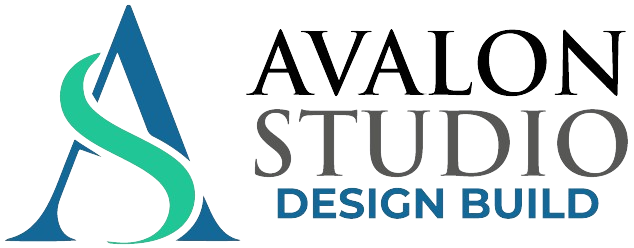Planning a kitchen remodel in Huntington Beach, California can feel exhilarating—and a little overwhelming. Between the coastal climate, local permitting requirements, and all the choices you need to make, a clear, step-by-step checklist is your best friend. This comprehensive guide walks you through every phase, from early vision-setting to final walk-through, with special notes for coastal homes. Early in your planning, consider whether you need design-build support for kitchen remodeling, permitting guidance, and construction management so you can move confidently from idea to finished space.
Define Your Vision and Goals
Start by writing down why you want to remodel. Is it to improve workflow, maximize storage, update an outdated look, or prepare the home for entertaining? Clear priorities prevent decision fatigue later. Make a mood board with images that capture the look and feel you want—coastal modern, classic craftsman, or a warm, eclectic blend. Think about how you cook, how many people use the kitchen at once, whether you need a dedicated coffee station, and how much seating should be integrated into an island or peninsula.
- Identify must-haves and nice-to-haves to guide trade-offs.
- Decide whether you prefer an open concept or defined kitchen zone.
- Consider ergonomic details like counter height and pull-out storage for accessibility.
- Note your appliance preferences, including fuel type and smart features.
Measure and Document Existing Conditions
Accurate measurements are the foundation of a successful plan. Measure the room’s length, width, and ceiling height. Mark the location of windows, doors, vents, outlets, plumbing lines, and gas lines. Photograph every wall and detail, including soffits, alcoves, and unusual angles. In coastal Huntington Beach homes, also note any signs of moisture intrusion or past corrosion, which can influence material choices and protective finishes.
- Measure door swings and clearance around tight corners.
- Verify structural walls before planning a wall removal.
- Check attic or crawlspace access for running new utilities.
Layout and Workflow Checklist
A well-planned kitchen layout minimizes steps and maximizes efficiency. Think beyond the old “work triangle” and account for zones: prep, cooking, cleanup, baking, storage, and small appliances. If you entertain often, consider a secondary prep sink or undercounter refrigerator in the island. For families, a landing zone for bags and a message center near the entry can keep chaos at bay.
- Choose a layout type: galley, L-shape, U-shape, or open with an island.
- Ensure at least 36 inches of clear walkway; 42–48 inches in work aisles is ideal for multiple cooks.
- Plan landing zones near appliances: 12–18 inches on each side of cooktop and sink, if possible.
- Place trash/recycling near the sink and prep area for easy cleanup.
Storage and Organization Essentials
Storage makes or breaks daily functionality. Blend full-height pantry cabinets with deep drawers, pull-outs, and corner solutions. In coastal areas, consider durable hardware and hinges with corrosion resistance. Don’t forget vertical storage for sheet pans and cutting boards, plus a dedicated space for countertop appliances you use frequently.
- Base cabinets with drawers improve access over traditional doors.
- Pull-out trays, spice pull-outs, and utensil dividers keep items visible.
- Custom inserts for knives, spices, and lids prevent clutter.
- Consider toe-kick drawers for seldom-used items.
Appliances and Mechanical Considerations
Select appliances early so cabinetry and electrical planning can accommodate exact sizes and ventilation needs. Decide on a range versus cooktop and wall oven, and confirm the required ventilation CFM. For Huntington Beach homes, proper venting is crucial to reduce humidity and protect finishes. Coordinate with an electrician on dedicated circuits, GFCI protection near water, and well-placed outlets for convenience and code compliance.
- Confirm appliance dimensions and clearances with spec sheets.
- Plan for a ducted range hood when possible to exhaust outdoors.
- Assess water line needs for refrigerator and instant hot or filtered water.
- Ensure dishwasher placement allows easy loading and unloading without blocking walkways.
Lighting Plan Checklist
A layered lighting plan elevates both beauty and function. Combine ambient lighting (recessed or surface-mounted fixtures), task lighting (under-cabinet and pendant), and accent lighting (inside glass-front cabinets). Aim for consistent color temperature across fixtures to avoid visual mismatch. Dimmer controls allow you to shift from bright prep modes to warm evening ambiance.
- Under-cabinet lighting to eliminate shadows on counters.
- Pendants centered over islands or peninsulas; verify height and spacing.
- Recessed lighting spaced for uniform coverage; avoid placing directly over cabinet faces to reduce glare.
- Dedicated lighting near the sink and range for safety.
Surfaces and Materials for Coastal Durability
Huntington Beach’s marine air calls for materials that resist moisture and corrosion. Seal natural stone thoroughly and maintain it per manufacturer guidelines. Consider quartz, porcelain, or sintered stone for durable counters with minimal maintenance. For cabinetry, high-quality finishes and moisture-resistant substrates help preserve longevity. Stainless or sealed decorative hardware, along with resilient flooring like porcelain tile or engineered options, can stand up to sand and salt tracked in from beach days.
- Choose easy-clean backsplash materials with minimal grout lines.
- Specify moisture-resistant substrates in sink bases and near dishwashers.
- Select finishes that complement natural light and nearby ocean views.
Color Palette and Style Cohesion
Define a cohesive palette that flows with adjacent rooms. Coastal kitchens often favor soft whites, ocean-inspired blues, and sandy neutrals, but bold accents can create personality. Use texture—brushed metals, matte finishes, wood grain—to add warmth. Align cabinet door styles, hardware shapes, and lighting fixtures to reinforce the overall narrative.
- Limit the palette to a few complementary tones for harmony.
- Balance warm and cool elements to avoid sterility.
- Use natural light as a guide; test samples at different times of day.
Permits, Codes, and Inspections in Huntington Beach
Kitchen remodels that involve electrical, plumbing, structural changes, or window modifications typically require permits and inspections. In Huntington Beach, you may need documentation for energy compliance and safety upgrades. Plan lead time for the permitting process and schedule inspections to align with construction milestones. Keeping detailed drawings and spec sheets simplifies approvals and gives inspectors what they need.
- Consult the building department early for scope and documentation requirements.
- Prepare a concise set of drawings showing layout, electrical, and plumbing changes.
- Coordinate inspection timing with demolition, rough-in, and final stages.
- Maintain an on-site folder with permits, plans, and product cut sheets.
Timeline and Phasing Overview
Even the most organized remodel benefits from a realistic timeline. Expect phases for planning, procurement, demolition, rough-in, inspection, drywall, cabinetry, surfaces, finish fixtures, and final punch list. Order long lead-time items early to avoid delays—especially custom cabinetry and specialty appliances. If you are remodeling a single kitchen in a busy household, plan a temporary kitchenette with portable appliances to minimize disruption.
- Identify critical path items such as cabinets and countertops.
- Batch delivery schedules to reduce jobsite clutter.
- Build buffer time for inspections and unforeseen conditions.
Mid-Project Quality Checks
At the midpoint of your remodel, verify that the work matches drawings and elevations. Confirm outlet locations, plumbing rough-ins, and vent placements before surfaces close up. Review cabinet layout on site, measuring to ensure appliance gaps and clearances are correct. This is also a strategic moment to align with your design-build partner on any adjustments necessary to keep the project on track for your vision of kitchen remodeling success.
Environmental and Wellness Considerations
Healthy indoor air and responsible material choices elevate comfort and sustainability. Select low-VOC paints and sealants, consider composite wood products that meet stricter emission standards, and ensure effective kitchen ventilation. Natural daylight should be preserved or enhanced, and window treatments can manage glare while maintaining ocean views. For water use, look into efficient faucets and dishwashers that perform well while conserving resources.
- Consider durable materials that reduce replacement frequency.
- Use task lighting and interior cabinet lighting for safe, efficient use.
- Evaluate acoustics—soft-close hardware and sound-absorbing finishes reduce noise.
Safety and Accessibility
Design for all ages and abilities. Anti-slip flooring, rounded edge profiles, and well-placed grab points can keep the space safe. Plan for seating with supportive backs and adequate knee clearance. For accessibility, pair drawer bases with pull-out trays and consider lowered microwave placement. Good lighting and clear traffic lanes support safe navigation during busy meal prep times.
- Install GFCI outlets near water sources as required.
- Provide adequate task lighting to reduce shadows while cooking.
- Consider lever-style faucets and D-shaped cabinet pulls for easier grip.
Final Finishes and Styling
As installation wraps up, turn attention to details that make the kitchen feel complete. caulk lines should be clean, paint touch-ups thorough, and hardware aligned. Style open shelves with a mix of functional items and personal touches—ceramics, cookbooks, and greenery. Test soft-close hardware, adjust doors and drawers, and confirm appliance functionality according to manuals. A meticulous finish ensures your remodel looks and works beautifully.
- Check seam placement and finish quality on counters.
- Inspect grout lines for consistency.
- Verify doors and drawers are aligned and gapped evenly.
Pre-Move-In Cleaning and Maintenance Plan
Before moving back in, complete a deep clean and create a maintenance routine. Protect counters with cutting boards and trivets, and follow manufacturer care guidelines for every surface. For coastal homes, schedule periodic checks of hardware and exterior vent terminations to monitor for corrosion or salt buildup. Keep a binder of warranties, care instructions, and paint or grout color codes for future touch-ups.
- Clean ducts and filters in your range hood before first use.
- Seal or re-seal natural stone per recommended schedule.
- Register appliances to activate warranties.
- Label a touch-up kit with exact paint sheens and finishes.
Detailed Kitchen Remodeling Checklist
- Vision: goals, style, mood board, priorities.
- Measurements: walls, ceiling, openings, utilities, photos.
- Layout: zones, clearances, island size, seating.
- Storage: drawers, pull-outs, pantry, specialty inserts.
- Appliances: size, specs, ventilation, water lines.
- Electrical: circuits, outlets, lighting, dimmers.
- Plumbing: sink/faucet, filtration, dishwasher, shutoffs.
- Surfaces: countertops, backsplash, flooring, trim details.
- Cabinetry: materials, finish, hardware, accessories.
- Permits: submittals, inspections, compliance documents.
- Scheduling: lead times, deliveries, milestones.
- Quality checks: rough-in verification, cabinet layout review.
- Finishes: caulking, touch-ups, final alignments.
- Maintenance: cleaning plan, warranties, manuals.
FAQs
Q: How long does a typical Huntington Beach kitchen remodel take?
A: Timelines vary by scope, but many projects fall into a multi-phase schedule that includes planning, permitting, ordering, demolition, rough-ins, finishes, and punch list. Plan for lead times on cabinetry and appliances and build in buffer time for inspections.
Q: What kitchen layout works best for coastal homes?
A: The best layout suits your household’s cooking and entertaining habits. Open plans with an island are popular near the coast for light and flow, but galley or L-shaped kitchens can be highly efficient with proper zoning and storage.
Q: Which materials hold up well in the coastal environment?
A: Durable counters like quartz or porcelain, corrosion-resistant hardware, moisture-resistant cabinet substrates, and resilient flooring such as porcelain tile perform well. Proper ventilation also protects finishes.
Q: Do I need permits for my remodel?
A: If your project involves electrical, plumbing, structural changes, or window/door modifications, permits and inspections are usually required. Align with local requirements and schedule reviews at key milestones.
Q: How can I keep my family comfortable during construction?
A: Set up a temporary kitchenette with essentials, plan meal strategies, and zone off construction areas. Communicate clearly with your build team about work hours and access to reduce disruptions.
Ready to Transform Your Huntington Beach Kitchen?
If you are ready to bring your vision to life, start by confirming your priorities, timeline, and must-have features. Whether you want a brighter, more functional layout or an entertainer’s dream, a disciplined checklist keeps the process smooth and enjoyable. Connect with a trusted local design-build partner to coordinate plans, permits, and finishes—and to deliver exceptional results in your home. Explore personalized options for kitchen remodeling and take the first step toward your ideal coastal kitchen today.

